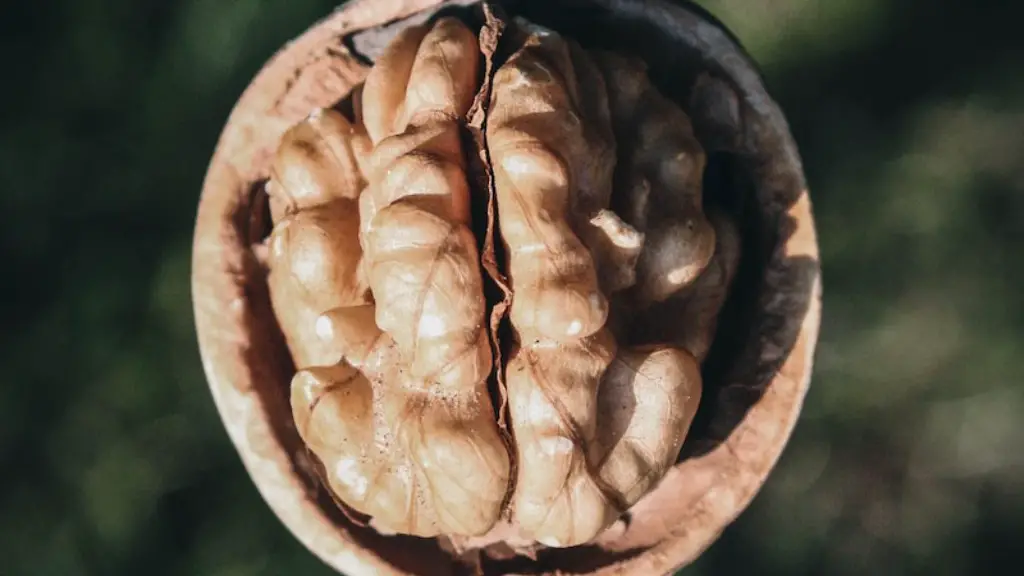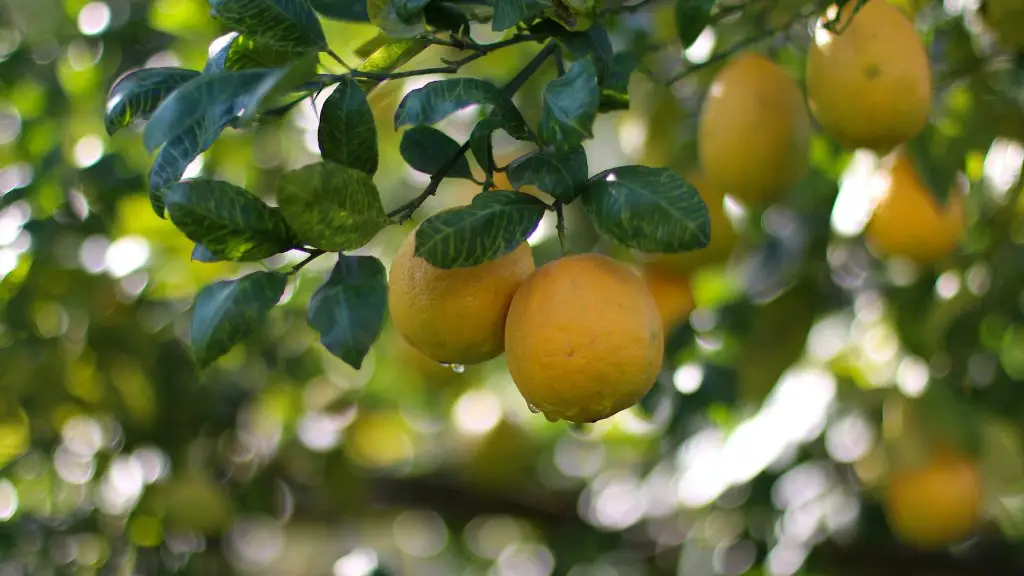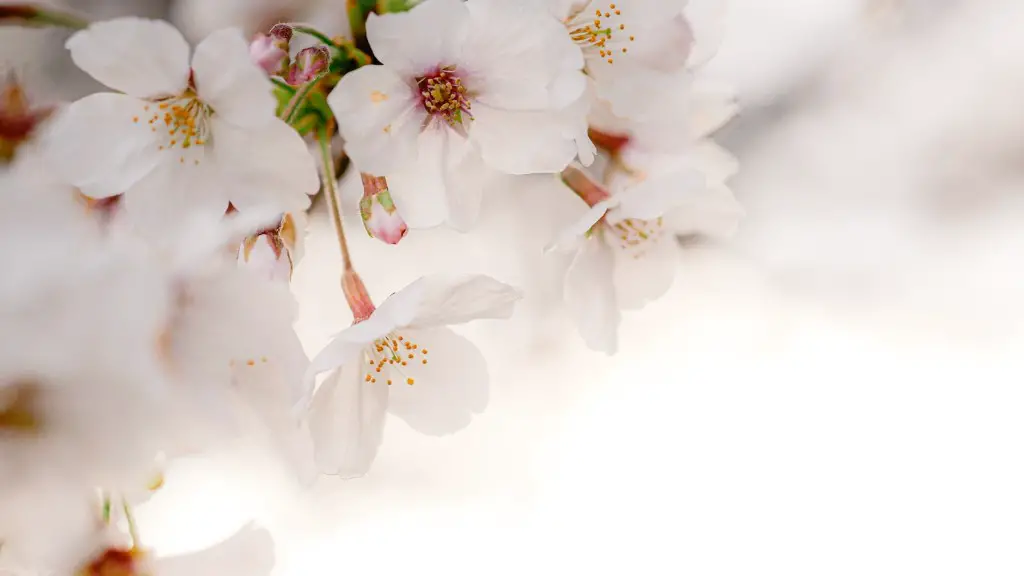Causes of Yellowing Outdoor Palm Tree
The nature of palm trees to turn yellow is a common sight and there are many causes. Factors such as too much water or too little can be one of the primary contributing factors. While yellow leaves can be an indicator of disease or pest infestation, they may also be caused by environmental stresses. It is important to identify the root of the problem in order to properly address it.
In dry climates, inadequate watering is the most likely cause. If the palm tree is underwatered, the fronds will start to yellow and become brittle. Overwatering can also cause yellow leaves due to root suffocation; when too much water is in the soil, nutrients needed for growth are deprived from the tree.
Environmental stresses such as cold and storm damage can also cause yellowing. Cold temperatures can cause the trunk to turn yellow and the fronds to drop off. Palms trees with frost damage tend to recover quickly once the temperature warms up, as long it is not extreme.
The location where the palm tree is planted can also have an impact. If the tree is placed too close to a wall, it can stunt the growth of the roots and cause the fronds to yellow and wither away. Poor soil conditions, whether too acidic, too dry or too compacted can impede proper growth and lead to yellowing.
As pests can weaken and infect trees rapidly, it is important to keep an eye on the health of the tree. Spider mites and scale insects both tend to be problematic for palm trees and can lead to yellowing as well. In such a case, it is important to seek professional advice and find the right treatment to get rid of them and protect the tree.
It is important to properly diagnose the issue in order to treat it properly. Yellowed fronds can be removed in order to reduce the burden on the tree, however the root cause must be identified and addressed in order to keep the tree healthy.
Potential Solutions for Treating Yellow Outdoor Palm Tree
The best way to treat a yellow palm tree is through proper watering and maintenance. Water the tree regularly so that the soil is moist but does not become waterlogged. This helps the tree to regulate its water intake and will reduce the chance of yellow leaves appearing.
Appropriate fertilization can be beneficial to a yellow palm tree as it helps ensure that the tree is receiving the essential nutrients it needs to stay healthy. A soil test should be conducted in order to determine the soil’s pH level and fertilizers should be applied accordingly.
If a pest infestation is the cause of yellowing, a pesticide should be applied as soon as possible. It is important to seek expert advice in order to ensure that the right product is used and that it is applied correctly. Additionally, any affected fronds should be promptly removed in order to minimize the spread of the pest.
The location of the palm tree may require adjustment in order to restore its healthy growth and prevent yellowing. Make sure the tree is planted in well-draining soil in a location that is not exposed to harsh winds or extreme temperatures. Adjusting the tree’s location in the shade or in a sheltered spot can help reduce the occurrence of yellow leaves.
If the tree has experienced cold damage, it is important to be patient and wait for the warmer weather for it to recover. The tree should not be watered too often as it may not be able to absorb it and this could cause further damage. If the trunk of the tree is yellowing, it is most likely a sign of cold stress and it is best to keep an eye on the tree and wait for warmer weather.
Identifying Yellowing Outdoor Palms Tree
The presence of yellow leaves on an outdoor palm tree is an indicator of a problem. In order to identify the cause of the yellowing, it is important to observe the tree. Too much or too little water, environmental stresses, pests, poor soil, and poor placement can all result in yellow fronds.
Inspect the tree for signs of pest infestation such as webs, mites, and scale insects. If any are present, seek professional advice to find the best treatment for the particular pest. If there are no signs of pests, it is important to look at other possible factors such as water, soil, and environment.
Inspect the soil to determine whether it is too dry or too waterlogged. If the soil is too dry, water the tree to the point that the soil is moist. If the soil is wet and waterlogged, reduce the amount of water that is being applied and allow time for the soil to dry out before watering again.
If the tree is located in a spot that has strong winds or extreme temperatures, it is best to move the tree to a more sheltered location that helps reduce the amount of stress experienced.
Finally, if the soil is alkaline or acidic, seek professional help to determine the best solution to rectify the soil’s pH level and ensure that the tree is receiving the necessary nutrients for healthy growth.
Preventing Yellowing Outdoor Palms Tree
Once the root cause of yellowing has been discovered, taking preventive measures is important to ensure the health and longevity of the tree. For example, providing adequate water and fertilization, as well as keeping an eye out for pests and environmental stresses can help prevent yellowing.
If the soil is too dry, it is important to water regularly so the soil remains moist but not waterlogged. If the soil is too moist, reduce the amount of water applied and ensure there is good drainage in the area.
Regular fertilization can provide essential nutrients to the soil, helping the tree to grow and flourish. A soil test can help determine if the soil is too acidic or alkaline and the necessary products can be applied to adjust the soil’s pH level.
When selecting a spot for the palm tree, it is important to make sure it is in a sheltered area, away from strong winds and extreme temperatures. Keeping the tree in an area with filtered sunlight will also help to ensure it gets the appropriate amount of light needed for healthy growth.
Finally, it is important to inspect the tree regularly for signs of pest infestation and take prompt action if any are detected. Getting rid of the pests quickly will reduce the chance of them damaging the tree further.
Treating Yellowing Outdoor Palms Tree Naturally
When it comes to treating yellow outdoor palm trees, natural solutions are often the best approach. Natural remedies such as Neem oil and other organic pesticides can be used to eliminate pests without the need for harsh chemicals that can harm the environment.
The growth of plants can also be enhanced by the use of beneficial insects such as ladybugs, Lacewings and parasitic wasps, which feed on other pests that are detrimental to the tree. Additionally, Earthworm castings or compost can help improve the soil’s fertility.
Organic fertilizers such as compost, manure or fish emulsion are great for providing the tree with essential nutrients. It is important to be careful not to over fertilize, however. Too much fertilization can lead to rapid growth, which can make the tree top heavy and prone to storm damage.
Natural treatments such as seaweed powder and kaolin clay can also be useful for deterring pests naturally. Seaweed powder helps to reduce the growth of fungi and bacteria, while kaolin clay provides a barrier against pests such as moths, aphids, whiteflies and thrips.
Natural methods should be used with caution, as they can take longer to take effect and require regular application. But with a bit of patience and the right natural treatments, it is possible to restore a yellow outdoor palm tree to good health.
Conclusion
The yellowing of outdoor palm trees can be caused by a variety of factors, such as too much or too little water, environmental stresses, pests, poor soil, and poor placement. Identifying the root cause of the problem is the first step in treating it. Solutions such as proper watering, fertilization, and pest control can help to restore the tree’s health. Additionally, preventive measures such as selecting the right spot and avoiding strong winds or extreme temperatures can help the tree to stay healthy. Natural treatments such as Neem oil, earthworm castings, compost, and seaweed powder can also be useful in treating a yellow palm tree.




